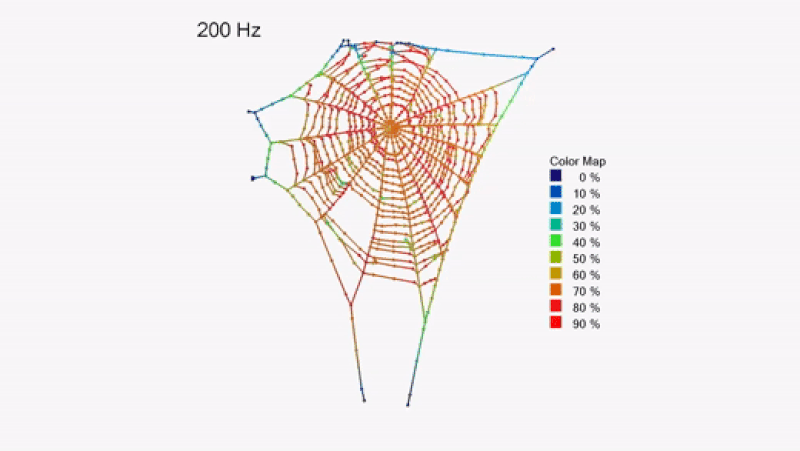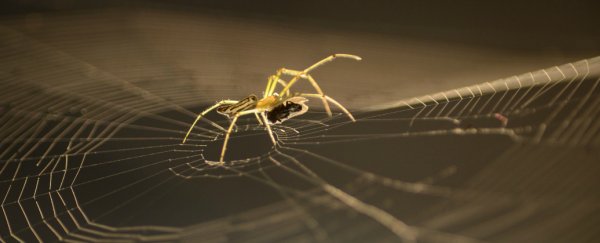Spider webs are essential for capturing food – but they might also be used as giant hearing aids for the arachnids that spin them, according to new research.
Spiders don't have ears, but they can 'hear' vibrations through their legs. When prey or predators are on the move, having those vibrations boosted through the web could be invaluable, the new study suggests, with webs spun that are sometimes 10,000 times the size of the actual creatures.
The researchers used a collection of orb-weaver spiders, known for making large webs, for their experiments, getting them to produce webs inside rectangular frames in the lab that could then be put through a series of tests.
"We find that the wispy, wheel-shaped orb web acts as a hyperacute acoustic antenna to capture the sound-induced air particle movements," write the researchers in their published paper.
 A web responding to sound waves. (Binghamton University)
A web responding to sound waves. (Binghamton University)
A laser vibrometer was used to measure the response of spider web silk to music in an anechoic chamber, a room designed to minimize sound wave reflections. The measurements showed that the webs moved in almost perfect unison with the sound, potentially capturing the audio as it hits.
Sounds of different frequencies and from different directions were tested with the webs, which then got related responses from the spiders – they typically turned, crouched, or flattened out in response. In the case of the directional audio, the spiders oriented themselves towards the location the sound was coming from.
Further experiments with miniature speakers placed close to the edge of the web showed sounds traveling further through the webs than through the air, and some of the spiders responded to the vibrations even when the sound hadn't reached the spiders through the air.
What's less clear is whether or not the spiders are actually doing with this information.
We know that spiders are able to hunt in packs, for example, via web vibrations passed through the sensory organs on the tarsal claws at the tip of spider legs. In this case, they're obviously responding to something when the sound waves hit, but further research will be required to figure out how the spiders are processing this information.
"There could even be a hidden ear within the spider body that we don't know about," says mechanical engineer Junpeng Lai from Binghamton University in New York.
The new study builds on previous research into the way that spider webs react to sound and music, but the way that silk threads respond to sound waves is different from how eardrums behave.
Humans and most other vertebrate species have eardrums that turn sound wave pressure into electrical signals that are then decoded in our brains. Insects and arthropods (including spiders) don't have those eardrums – so the web might be a replacement.
Through their movements in response to sounds, the spiders might even be tuning the web strings to pick up different audio frequencies. There are lots of potential avenues to explore for researchers building on this latest study – and that includes possible improvements to audio equipment that could benefit from some natural inspiration.
"The spider is really a natural demonstration that this is a viable way to sense sound using viscous forces in the air on thin fibers," says mechanical engineer Ron Miles from Binghamton University.
"If it works in nature, maybe we should have a closer look at it."
The research has been published in PNAS.
